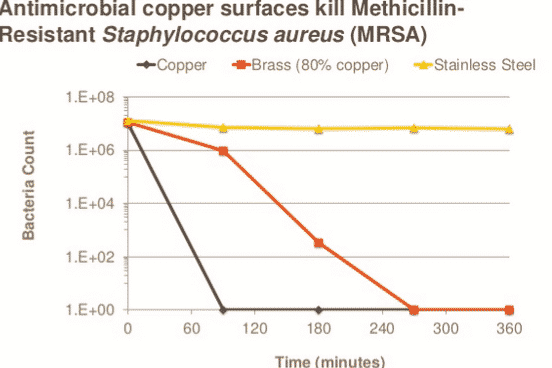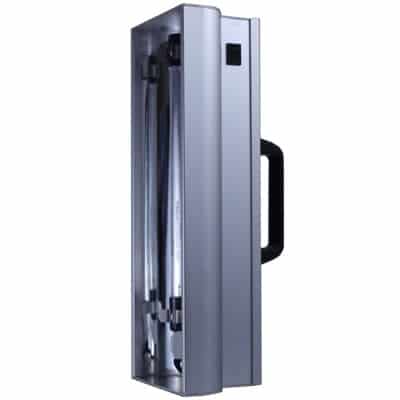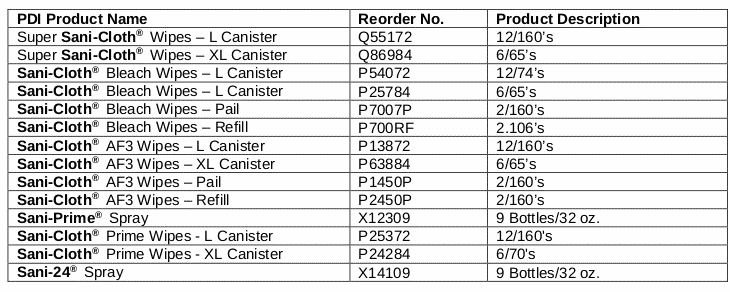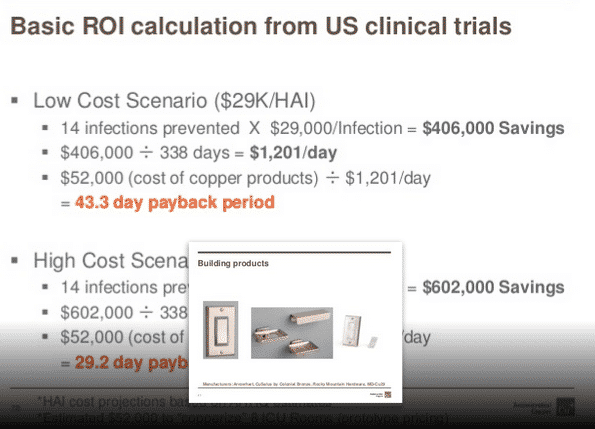
AntiBacterial Kiosk Touch Screen Kiosk
Update 12/12/2021 — Antibacterial treatments are still generally addressed with station cleaning. PDI has the best ones and are the major provider to hospitals and more. There are many more contactless options which typically are QR code based or mobile proxy but cleaning is the most dependable and most usable. Vendors promoting antimicrobial treatments surged during the main pandemic but they have declined since then.
July 2021
Antimicrobial Kiosks in the news. Samsung is the latest to call out antibacterial “certification”. See LinkedIn for our writeup. Latest miracle is Zinc Pyrithione. Sometimes used with antimicrobial copper. Zinc Oxide is referred to for touchscreen use. MicroBan offers a wide variety of antimicrobials and there was a burst of companies during the pandemic. Here is article by National Library of Medicine. The most common iteration is AEGIS by Microban. Here is a promo article on AEGIS.
The Washington Post did a nice article on temperature kiosks in March.
Our take is still that touchscreens along with their POS devices/etc are the best way to allow the public to interact. MRSA is probably a bigger concern as far as remaining on surfaces than COVID (mainly aerosol in the air). Antibacterial treatments for touchscreens have so many caveats and only a very narrow and basically useless range of effectiveness. And you are much more likely to get infected from the front desk (and they from you) than you are from a properly maintained check-in kiosk with a touchscreen. Many of those also support the mobile handheld as a proxy input (think remote control) but then you should be aware that your mobile phone is likely the 3rd most likely infection point (#2 is toilet and #1 are sinks actually).
But there are people that will sell the coating (figure $200 upcharge) and if you are into hygiene theater you can arrange some signage that tells people you have antimicrobial treated touchscreens. The CEO of Marriott broke down hygiene theater into the swiss cheese analogy. Enough layers and pretty soon you have a complete wall with no holes.
There are new UV and UV-C treatments. One of them is UL and FDA approved and has been adapted for elevators as well as ATM screens and pinpads. Contact us if interested.
November 2020 Coronavirus Kiosk Update:
By now we have all seen and read countless articles on how best to protect ourselves and others from bacterial infection. Before we begin we want to list some recommended resources right off the bat that can help educate your point of view on antibacterial, antimicrobial and of course, the coronavirus.
You need to be aware that different touch technology has different needs. A 17″ or 19″ SAW or resistive is different from a large format IR (Infrared) or Cap (Projected capacitive touch) which are anywhere from 22″ to 85″. Typically 32,42,46,55 and 65).
Mitigation requires several tools in combination to fully address antibacterial. There are no silver bullets though daily cleaning of touchscreens is the closest to that.
On antimicrobial coatings — it is important to remember these coating generally “inhibit the growth”. If you can inhibit growth over 72 hours (ie no touching of screen) then bacteria will die on its own accord. Antimicrobial coatings do not kill bacteria directly. Also note that there are companies who are taking advantage of the situation.
Lawsuits 6 months down the road are a definite possibility if you make false promises based on a false sell. Always ask what it does and what it doesn’t do.
Our current recommendations:
- Clean surfaces with warm soapy water. That breaks down the viruses and removes it. Touch screens use different solution.
- Another option — wipe down with bleach wipes and after several passes of that wipe down with Easy Screen.
- Bleach – figure 1/3 cup bleach per gallon of water for mix ratio
- Avoid highly concentrated solutions of alcohol based.
- If you want to “double-clean” then consider getting handheld UVC product like the Blade below for localized and safe UVC cleaning (after surfaces have been wiped down). Oily fingers are one of the complicating factors to consider.
- Include hand sanitizer station near the kiosk
- Place a daily maintenance sheet near the kiosk indicating last maintenance and cleaning. Ideally, build it into your application so the maintenance cycle is automated, recorded and displayed at the actual device.
Questions for AntiMicrobial Providers
- Can you done any independent lab tests?
- Can you send those results?
- What specific bacteria does it inhibit?
- What bacteria does it promote? (yes, some actually promote)
- How long does bacteria survive on a treated screen?
Recommended Resources
Some recommended sources of internet resources include:
- Hospitals
- John Hopkins Update and Resources
- Kaiser Permanente Coronavirus Update and here is additional KP Update
- Cleveland Clinic Coronavirus Page
- Stanford Hospital Fact Sheet
- How Long On Surfaces? New England Journal of Medicine 3/18/2020 (Note: for some reason NEJM not using https)
- Kiosk Specific
- Olea Kiosks blog on Cleanliness
- Pyramid Computers — Advanced Cleaning and Disinfection
- Storm Interface Recommended Keyboard Cleaning Procedure
- Zebra Recommended Device Cleaning
- MimoMonitors – How To Clean Our Touchscreens
- 22 Miles COVID-19 Response
- Reducing Risk of Transmission – Olea Kiosks
- Cleaning Large Format IR and PCap Touch Screens – post
- Restaurant Technology News Resources
- Tablets iPads and More Advisory by Lilitab
- Free Lilitab Sani-Holder For Customers
- Lilitab IPad Cleaning PDF
- Elotouch Coronavirus Cleaning Faq
- Cleaning ATM – Hyosung Americas
- Kiosk Manufacturer Association “Are All Touchscreens Created Equal”
- POS Cleaning Guide PDF from Toshiba 3/20
- NCR Cleaning Advisory for hardware, ATMs, terminals, POS
- PDI disinfectant wipes (the number one disinfecting wipe in hospitals and healthcare)
- PDI Easy Screen – safe for all touchscreen with MSDS
- Spaces
- Continuous UV-C Air Purification – link VidaShield UV24
- General
- Is spraying disinfectant in public spaces a good way to fight COVID-19? Answer is no. Looks like you are doing something to the general public. From CBC Canada
- FAQ from Guardian Science Editor – Do Facemasks help?
- Negative Post on Cash and Why To Use Digital – We could argue that using cash is less involved equation. Also the WHO is not taking into consideration the scarcity of contactless credit cards here in the U.S. We would really like to see VISA and Mastercard modernize the US EMV equation but change is difficult ironically enough.
- AntiMicrobial Films — Tip: Olea Kiosks and others offers anti-microbial films that can be adhered to the LCD screens and is even field retrofittable. The best part is the material can also be wiped down with very aggressive cleaning materials daily for years on end and will not fade or show wear. If you need cleaning materials Olea Kiosks can provide and recommend effective cleaner wipes by the leaders in medical cleaning technology.
- Kiosk Manufacturer Advisories
- Reducing Risk of Transmission – Olea Kiosks
PDI Update
PDI has been monitoring the COVID-19 epidemic (SARS-CoV-2 virus), previously identified as 2019 Novel Coronavirus (2019-nCoV), to provide you the most current information to help manage this outbreak. The CDC has recently issued additional recommendations for surface disinfection, including recommendations for the use of an EPA-approved disinfectant with emerging viral pathogens claims. This letter supersedes previous letter issued on January 30, 2020.
Super Sani-Cloth ® Wipes, Sani-Cloth ® AF3 Wipes, and Sani-Cloth ® Bleach Wipes meet the criteria for the EPA emerging viral pathogens claim. PDI has submitted the addition of the required language for this claim on these master labels to the EPA and is awaiting expedited approval. Recently launched products, including Sani-Cloth ® Prime Wipes, Sani-Prime ® Spray, Sani-24 ® Spray, and Sani-HyPerCideTM Spray already have the EPA emerging viral pathogens claim on their master labels.
Recommended Wipe
Super Sani-Cloth is what we would recommend. It is the most equipment-friendly wipe that is on the list.
The SARS-CoV-2 virus still has not been made readily available by the CDC for testing. The CDC states: “If there are no available EPA-registered products that have an approved emerging viral pathogens claim for COVID-19, products with label claims against human coronaviruses should be used according to label instructions.” The following PDI products have label claims against human coronaviruses:
Handheld cleaning would include after-hours with handheld UV device (example here is Blade). $500
Don’t Believe It
Bad Data Tabloids
A year or so ago an article on “dirty” McDonalds touchscreens came out in London tabloid and while proved inaccurate there are those that have used it to create a certain fear factor. The intent of the article was essentially “clickbait” for sensational traffic.
We have articles here on the site from legitimate sources which disproved and countered. Companies will also use this article as “fear factor” for buying their products. If this article is their primary credential then that tells you something.
While some fantastical things like your Marketing people making decisions at midnight in the company parking lot via chicken bones and marbles can be considered possibly true, we like to think they utilize factual analytic data.
Employees
- Training employees to clean their hands and then to clean the public surfaces on regular basis is best practice
- Do employees get paid sick time or do they have to come into work and potentially infect people?
- You’ve opted not to use the cleaned kiosk and go to the counter. How close is that McDonalds person to you talking to you and how many people have been talking in that zone? Drive Thru’s get a lot busier.
But what about your cellphone?
Because phones get so dirty, they’re as important to keep clean as your hands. But you can’t lather, rinse, repeat your phone with soap and water — so that’s where alternative cleaning methods come into play, such as UV lights that disinfect your device.
A new study conducted by PhoneSoap, a company that sells UV sanitizing devices for your phones, has found that the surface of the average device is 18 times dirtier than a public restroom. In an interview with Mashable, co-founder Dan Barnes says PhoneSoap calls phones “the third hand you never wash.”
Difference between Antimicrobial and AntiBacterial
Antimicrobial and antibacterial solutions for touchscreens and kiosks have been around a long time and there has been improvements over the years. Important in the self-service terminal that the treatment does not affect the touchscreen
The primary difference between antibacterial and antimicrobial substances is the types of microorganisms they act upon. While antibacterial products prevent the development of bacteria, antimicrobial agents such as alcohol-based hand sanitizers prevent the spread of bacteria, fungi, and some viruses. This is a much broader scope of protection than the protection found in antibacterial products.
Cleansing wipes are one type of product that is available as both an antibacterial product and an antimicrobial product. Antibacterial hand wipes kill bacteria, while antimicrobial wipes kill bacteria plus other microorganisms that can cause human illness. Both antibacterial and antimicrobial wipes can be a component of effective hand hygiene.
- Wikipedia on Antimicrobial
- PDI disinfectant wipes (#1 in healthcare)
- PDI Easy Screen – released in 2016. Antimicrobial certification expected fall 2016.
- Microban
- Sanitech
- BioCote antimicrobial paint
- AEGIS information
- Copper and EPA tests by Cuverro
- Corning Gorilla Glass silver coating
- iKlear wipes
- Prevention of MRSA- resources on CDC
- Hazards of UV – University of Vermont — https://www.uvm.edu/riskmanagement/hazards-ultraviolet-radiation
- UV Light Technology in UK
- American Ultraviolet
- Handheld UV Application
Antibacterial Kiosk Solutions
Wipes – PDI Easy Screen
Compatible touchscreen cleaner that works.
• Features the power of 70% isopropyl alcohol (IPA)
• Fast-drying, No residue, Anti-fogging, Anti-streaking
• Rapidly cleans dirt, grime, fingerprints, and smudges
• Compatible with touchscreen healthcare equipment, including Corning® Gorilla® Glass (3 and 4)1, Sapphire glass, Aluminum silicate, Acrylic Glass, Etched glass, Stainless steel, and more! MSDS Sheet.
Spray & Coating – Sanitech Information
SurfaceClean is a hospital-grade cleaner disinfectant that kills 99.9% of germs and bacteria on hard, non-porous surfaces.
SurfaceClean- enhances the effectiveness of our antimicrobial coatings by properly preparing surfaces for antimicrobial treatment
SurfaceClean is designed for use prior to the application of long lasting antimicrobial products. It is also recommended for regular maintenance cleaning.
SurfaceClean is a cost effective and easy to use solution. SurfaceClean is available in 32 ounce spray bottles and 1 or 5 gallon containers.
SurfaceClean Disinfects and Eliminates:
-
-
- 99% of Germs and Bacteria
- Healthcare associated MRSA
- Community associated MRSA
- H1N1 Flu Virus
- SARS
- Avian Influenza
- Hepatitis
- Mumps
- Rhinovirus
- Rotovirus
-
For how long?
SurfaceAide XL delivers durability, safety and affordability to protect vital surfaces from the growth of bacteria, mold and fungi 24/7 for up to 90 days.
SurfaceAide XL
- Generates an environmentally friendly, non-leaching antimicrobial barrier on surfaces that is non-toxic and non-sensitizing
- Promotes long-term reduction of harmful bacteria, mold and fungi on surfaces
- Minimizes the presence of microbes on touch points that can serve as transfer routes for bacteria from surface-to-skin
- One application effectively fights the growth of bacteria, mold and fungi, non-stop on surfaces for up to 90 days
- Proactively and continually prevents odor, staining and deterioration caused by bacteria, fungi, mold and mildew
- Can be safely and easily applied without affecting day to day operations
- Invisible, odorless and will not affect the appearance or performance of treated surfaces
- Since SurfaceAide XL does not leach, the organism cannot emerge as a new resistant microbe or “super bug”
- Essentially dimethyl ammonium chlorides
Clorox Professional
– Link – competes with PDI. Using “Quat Alcohol”.
Here is the Clorox info. Same as PDI but percentages are not revealed. Price is different I am guessing.
AEGIS INFO
Treated vs. Untreated Surface — The unique AEGIS Microbe Shield is a fabric enhancement that gives the treated surface-active antibacterial action. The germ-killing action is the result of a micro polymer coating, which mechanically destroys bacteria, mold, fungus and their allergens on contact. AEGIS contains no chemicals, is not consumed by microorganisms, and remains effective for the life of the product.
COPPER AND ALLOYS


UV-C Antibacterial Light
Another antibacterial tool is UV-C light. It however has many cautions. We have a separate summary page for UV-C Antibacterial located here.
What Are Germicidal Lamps?
Germicidal lamps emit radiation in the UV-C portion of the ultraviolet (UV) spectrum, which includes wavelengths between 100 and 280 nanometers (nm). The lamps are used in a variety of applications where disinfection is the primary concern, including air and water purification, food and beverage protection, and sterilization of sensitive tools such as medical instruments. Germicidal light destroys the ability of bacteria, viruses, and other pathogens to multiply by deactivating their reproductive capabilities. The average bacteria may be killed in 10 seconds at a

The handheld, portable UVC Blade deactivates bacteria, viruses and fungi in hard to reach places and in environments that only need occasional exposure to UVC light. It is also an effective solution for mold remediation.
The Blade features an on/off safety switch, and a comfortable handle that minimizes grip discomfort.
Hazard and Risks from Germicidal Lamp UV Radiation
UV radiation (UVR) used in most germicidal bulbs is harmful to both skin and eyes, and germicidal bulbs should not be used in any fixture or application that was not designed specifically to prevent exposure to humans or animals. UVR is not felt immediately; in fact, the user may not realize the danger until after the exposure has caused damage. Symptoms typically occur 4 to 24 hours after exposure. The effects on skin are of two types: acute and chronic. Acute effects appear within a few hours of exposure, while chronic effects are long-lasting and cumulative and may not appear for years. An acute effect of UVR is redness of the skin called erythema (similar to sunburn). Chronic effects include accelerated skin aging and skin cancer. UVR is absorbed in the outer layers of the eye – the cornea and conjunctiva. Acute overexposure leads to a painful temporary inflammation, mainly of the cornea, known as photokeratitis. Subsequent overexposure to the UV is unlikely because of the pain involved. Chronic exposure leads to an increased risk of certain types of ocular cataracts. Working unprotected for even a few minutes can cause injury. It is possible to calculate the threshold for acute effects and to set exposure limits. It is not possible, however, to calculate threshold for chronic effects; therefore, because no exposure level is safe, exposure should be reduced as much as possible.
UV-C Handheld Blade FAQ
- How does one use it?
With the Blade unit, all you need to do is get it as close to the surface as possible and pass it over the surface. Being one inch away, a few seconds exposure kills all bacteria and virus.
- How long does it take?
Some take a little longer than normal but a few seconds is plenty if 1 inch away
- What is the wrong way to use them?
You don’t shine the light up or at anyone and the operator should wear safety glasses which we include with every unit
- How does it handle oily fingerprints and smudges?
The surface should be wiped down for the best application
- These should be used in off-hours when no customers or patients around? Example: the front lobby of VA where check-in’s are taking place.
They can be used 24 hours a day, you just need to have people stand back while you run the unit over the surface
UV-C Resources
- Germicidal lamp safety tips
- Hazards of UV – University of Vermont — https://www.uvm.edu/riskmanagement/hazards-ultraviolet-radiation
- UV Light Technology in UK
- American Ultraviolet
- Hand held UV-C application
- Picture and article on UV-C Award
- Room Treatment — VidaShield UV air filtrations in every room/operatory, check them out at https://vidashield.com/. These rid the air of all bacteria, fungi and viruses every 15 minutes during business hours. There are HVAC mirrors with high-speed suction which will reduce aerosols during treatment along with the Isolite system, which dental offices have always used if needed during treatment.
- CNN Health 4/26/2020 — article link –If sunlight kills coronavirus, why not try UV lamps?
For more information and assistance contact KMA
More Antibacterial Kiosk reference and useful links

|
Craig is a senior staff writer for Kiosk Industry Group Association. He has 25 years of experience in the industry. He contributed to this article and received an award for UV-C kiosk integration. |





